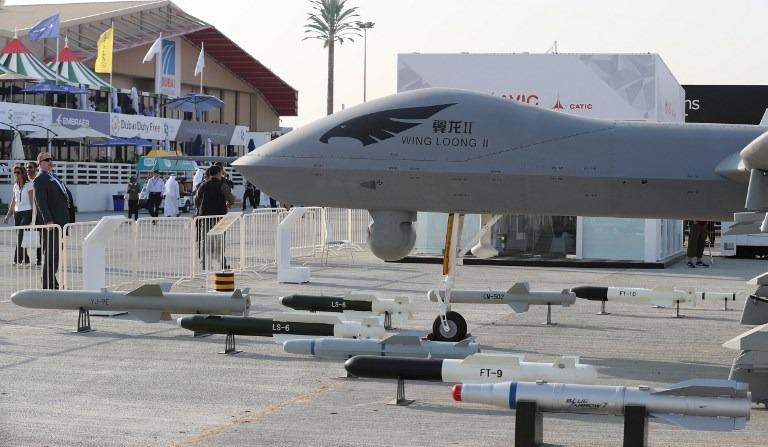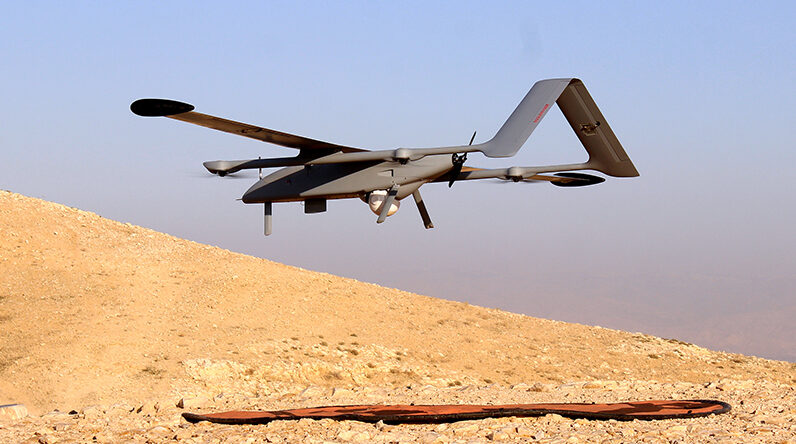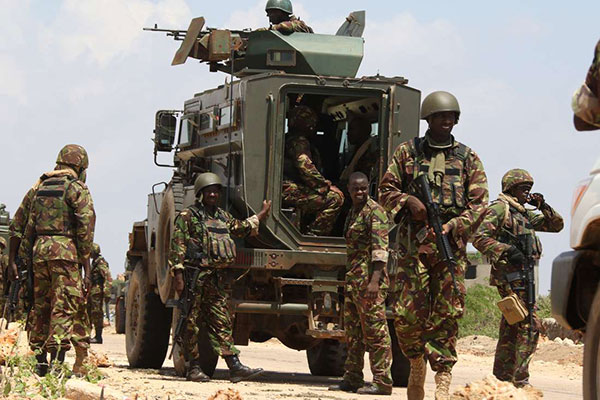Gripen E-series
Gripen E-series is a new fighter aircraft system. Developed to counter and defeat advanced future threats, the E-series is for customers with more pronounced threats or wider territories to secure.
Key features
Advanced electronic warfare with spherical coverage and the latest AESA technology for high survivability.
Intuitive HMC with AI, enabling the pilot to make quick and correct decisions.
Revolutionary avionics architecture supporting smooth capability growth to maintain technological superiority and adapt to new operational needs.
Key facts
Gripen E Gripen F Gripen Maritime
Number of seats 1 2 1
Length over all 15,2 meters 15,9 meters 15,2 meters
Width over all 8,6 meters 8,6 meters 8,6 meters
Maximum take-off weight 16500 kg 16500 kg 16500 kg
Max thrust 98 kN 98 kN 98 kN
Hardpoints 10 10 10
Combat turnaround 10-20 minutes 10-20 minutes 10-20 minutes
Air-to-air refueling Yes Yes Yes
Mauser BK27 mm gun Yes - Yes
Gripen E
Designed to defeat any adversary. Made for forward-thinking air forces, Gripen E incorporates cutting-edge technologies, the latest systems, sensors, weapons and pods to ensure combat advantage, g air superiority in highly contested environments. Silent networking and total sensor fusion across a tactical air unit to blind and confuse the enemy. One aircraft active, the others go passive. Together the team gets the first missile launch opportunity and the first kill. Gripen E re-defines the rules of the game.
Gripen E has the powerful GE F414G engine, great range and the ability to carry an impressive payload with its ten hard-points. It also has a new AESA-radar, InfraRed Search and Track System (IRST), highly advanced electronic warfare and communication systems. The E-series redefines air power for the 21st century by extending operational capabilities.
Human Machine Collaboration
We envisioned Gripen E to be an extension of the pilot’s mind and body, and we achieve it through advanced Human Machine Collaboration (HMC). The concept speaks for itself: Human and machine work seamlessly together to achieve mission success. ggggg
Gripen’s embedded AI capability and its future-oriented cockpit design that features the Wide Area Display (WAD), facilitate the pilot’s decision-making process and g crucial assistance in the midst of a complex mission. The WAD presents the information in a user-friendly way, which supports the pilot’s ability to select, launch and guide weapons in perfect coordination with other members of a tactical air unit.
Decisive Information Advantage
Fighter pilots need to have full awareness of the situation to be able to see first, understand first and act first, to maintain the combative edge over the adversary. In a contested environment, this is the difference between being able to engage or being forced to abort. Gripen’s suite of sensors delivers cross-domain data gathering and an unprecedented level of networked sensor fusion.
Information is quickly analyzed and shared in real-time, enabling critical decisions to be rapidly implemented, ensuring tactical superiority.
All information collected by the tactical unit and other available battlefield sensors is also vital, and it needs to be linked, processed and presented in an accurate way. This superior situational awareness provides the tactical edge that Gripen E needs to secure mission success and platform survivability.
Electronic Warfare
Today’s battlefield is highly complex, contested and hostile, and Gripen has the ability to penetrate the enemy’s anti-access zones and disrupt its capacity to perform. Gripen E’s integrated cutting-edge electronic warfare system combines a variety of offensive and defensive measures to disrupt enemy efforts while protecting itself to ensure high survivability. Gripen does real-time signal analysis and countermeasures management, as well as extensive electronic intelligence (ELINT) signal collection to vanquish any rival.
Lethality
Gripen E has 10 hard-points; offers the best in class weapons and pods from around the world; and has an unrivalled ease of stores integration. Gripen E can conduct air-to-air, air-to-surface and reconnaissance missions. Air supremacy is achieved with the carriage of up to seven Meteor Beyond Visual Range Air-to-Air Missiles and two Within Visual Range IRIS-T missiles. Weapons like these, combined with the ability to use offensive and defensive means simultaneously, enables Gripen E to detect, engage and suppress or destroy targets effectively.
Maximum Force Readiness
From the outset, Gripen E was designed for ease of maintenance that secures higher availability than its competitors. Gripen E can operate in extreme climates and from dispersed and unprepared road bases or airstrips. It takes less than 20 minutes with only a limited number of ground crew and equipment to refuel and rearm Gripen for an air-to-air mission, which ensures rapid re-engagement. With low maintenance requirements per flight hour, Gripen E spends less time on the ground and more time in the air.
Interoperability
Gripen E has the capability to fully operate with allied joint forces in the air, on the ground and sea. The ease of weapon integration, the use of common communication systems and networked datalinks makes Gripen E a smart choice for an interoperable jet fighter.
Adaptability
Securing technological superiority over highly capable adversaries is the most crucial factor for success in modern warfare, and Gripen’s capability to master new threats by evolving continuously redefines the rules of the game. Gripen’s users can fight Day 1 of a conflict, then learn and adapt its software applications to secure combat advantage for Day 2. Smart, right?
Gripen’s revolutionary avionics design separates mission system functionality from flight-critical software to adapt to new operational needs and support smooth capability growth without affecting the need for recertification. As soon as new technology becomes available, Gripen can be updated accordingly to ensure continuous capability growth. This changes the paradigm of extensive and costly mid-life upgrades that burdens the availability of competing fighter fleets.
Gripen E’s avionic system has forever made “fighter generations” a thing of the past
With Gripen E we decided early on to embrace the speed of technological change. The new avionics system in Gripen E allows to make software updates within hours. Listen to Daniela, one of Saab’s avionics experts as she explains why we don’t talk about fighter generations any more.
Defeat any threat. Anywhere.
Gripen E avoids detection by acting silent or suppressing enemy capabilities. Its advanced electronic warfare system, similar to an electronic shield, allows disruption of the enemy’s ability to function effectively. This can be used either to assist in destruction of enemy assets or simply to reduce the enemy’s ability .
Gripen Maritime is part of the Gripen E-series. We are establishing Gripen Maritime as its new generation carrier-based fighter for the future. Intended for both CATOBAR and STOBAR operations, the Gripen Maritime size and flight/hangar deck manoeuvrability will offer a simple and robust fighter in terms of all embarked operations. Its small logistics footprint and reduced spares inventory will make it significantly more maintainable and require far fewer personnel than existing fleet fighters.
Marinised engine
Gripen Maritime will meet or exceed all operational requirements for maritime fast jet operator nations around the world. The fighter can operate in high humidity and is designed to withstand the corrosive effect of salt water ingress. The GE 414G engine is fully marinised for embarked operations.
Steady deck landings
Rapid pitch and roll authority as well as precision glide slope control will give Gripen Maritime pilots an ideal platform for safe and steady deck landings.
Did you know?
With the Gripen E-series, users secure forward-thinking capabilities to determine the rules of engagement. Born to fight any adversary, Gripen defines combat in a smarter way.
Gripen E’s agile avionics allows users to fight day one of a conflict, learn and adapt software applications to secure a combat advantage for day two.
The suite of advanced sensors delivers cross-domain data gathering and fusion. Information is analysed and shared in real time ensuring information superiority.
Operations are secured by ease of maintenance and high availability. Gripen can operate in extreme climates and from dispersed road bases to preserve maximum force readiness.
Gripen E is designed to work within the enemy’s A2AD (Anti-Access Area Denial) “dome”.









